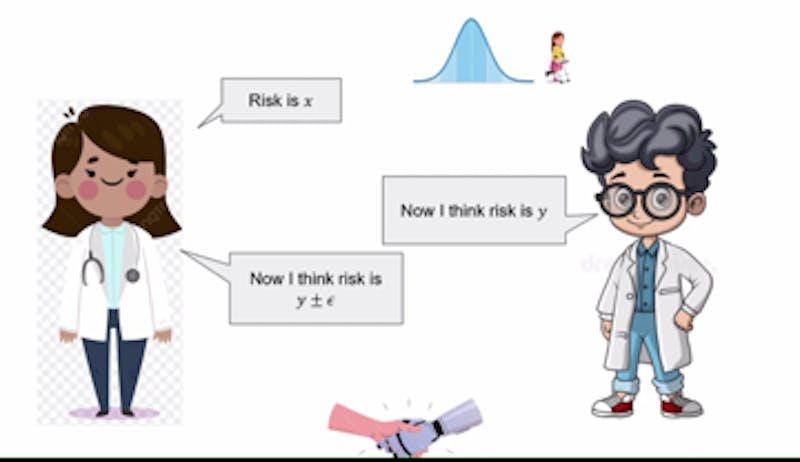Science
Experts Discuss Human-AI Collaboration in Groundbreaking Lecture

On October 23, 2025, the Whiting School of Engineering at Johns Hopkins University welcomed Aaron Roth, a professor of computer and cognitive science at the University of Pennsylvania, for a lecture titled “Agreement and Alignment for Human-AI Collaboration.” This presentation highlighted findings from three significant research papers: “Tractable Agreement Protocols,” presented at the 2025 ACM Symposium on Theory of Computing, “Collaborative Prediction: Tractable Information Aggregation via Agreement,” and “Emergent Alignment from Competition.”
As artificial intelligence (AI) continues to permeate various sectors, the need to explore its potential role in aiding human decision-making becomes increasingly pressing. Roth illustrated this concept through the example of AI supporting doctors in diagnosing patients. In this scenario, the AI generates predictions based on various factors, including historical diagnoses and symptoms. The physician then assesses these predictions, using their own expertise to either support or counter the AI’s recommendations.
Roth elaborated on the collaborative process that unfolds when discrepancies arise between the AI’s predictions and the doctor’s analysis. Both parties can engage in a finite series of discussions, iteratively refining their viewpoints until they reach a consensus. This process relies on what Roth termed a “common prior,” where both the AI and the doctor start with shared assumptions about the situation, even if they possess different information. In this framework, both parties are classified as perfect Bayesians, a concept Roth referred to as Perfect Bayesian Rationality.
Despite its theoretical appeal, Roth acknowledged challenges in achieving a common prior, particularly given the complexities of real-world scenarios. For instance, in multi-dimensional discussions such as those involving hospital diagnostic codes, reaching an agreement can become exceedingly difficult. To navigate these complexities, Roth proposed the use of calibration, likening it to assessing the accuracy of a weather forecast.
“Calibration is one of those tests,” Roth explained. “You can design tests to determine if forecasters are providing true probabilities, and they can either succeed or fail those tests.”
Roth introduced the idea of conversation calibration, which occurs when the AI and doctor make claims based on each other’s previous statements. For example, if the AI suggests a 40% risk associated with a treatment and the doctor estimates it at 35%, the AI’s subsequent claim will adjust to fall between these two figures. This iterative process continues until both parties arrive at an agreement, facilitating more efficient decision-making.
While this model assumes aligned goals between the AI and the doctor, Roth highlighted potential conflicts of interest. For instance, if an AI system is developed by a pharmaceutical company, its recommendations may inadvertently favor the company’s products. To mitigate this risk, Roth recommended that physicians consult multiple AI models from different providers. This competitive approach would encourage each AI to align its outputs with the interests of the doctors, enhancing overall decision-making quality.
Roth concluded the lecture by addressing the concept of real probabilities—those that accurately reflect how the world operates. While precise probabilities are ideal, they are often unnecessary in practical applications. Instead, it suffices for probabilities to remain unbiased under certain conditions, allowing for the estimation of reliable probabilities directly from data without the complexity of perfect reasoning.
Through this nuanced understanding of collaboration between doctors and AI, Roth emphasized the potential for improved agreement on treatment decisions and diagnostics, paving the way for a more integrated approach to healthcare.
-

 Science4 weeks ago
Science4 weeks agoInventor Achieves Breakthrough with 2 Billion FPS Laser Video
-

 Health1 month ago
Health1 month agoCommunity Unites for 7th Annual Into the Light Walk for Mental Health
-

 Top Stories1 month ago
Top Stories1 month agoCharlie Sheen’s New Romance: ‘Glowing’ with Younger Partner
-

 Entertainment1 month ago
Entertainment1 month agoDua Lipa Aces GCSE Spanish, Sparks Super Bowl Buzz with Fans
-

 Business1 month ago
Business1 month agoTyler Technologies Set to Reveal Q3 Earnings on October 22
-

 Entertainment1 month ago
Entertainment1 month agoMother Fights to Reunite with Children After Kidnapping in New Drama
-

 World1 month ago
World1 month agoR&B Icon D’Angelo Dies at 51, Leaving Lasting Legacy
-

 Health1 month ago
Health1 month agoCurium Group, PeptiDream, and PDRadiopharma Launch Key Cancer Trial
-

 Entertainment1 month ago
Entertainment1 month agoRed Sox’s Bregman to Become Free Agent; Tigers Commit to Skubal
-

 Science1 month ago
Science1 month agoNorth Carolina’s Biotech Boom: Billions Invested in Manufacturing
-

 Health1 month ago
Health1 month agoNorth Carolina’s Biotech Boom: Billions in New Investments
-

 World1 month ago
World1 month agoIsrael Reopens Rafah Crossing After Hostage Remains Returned









